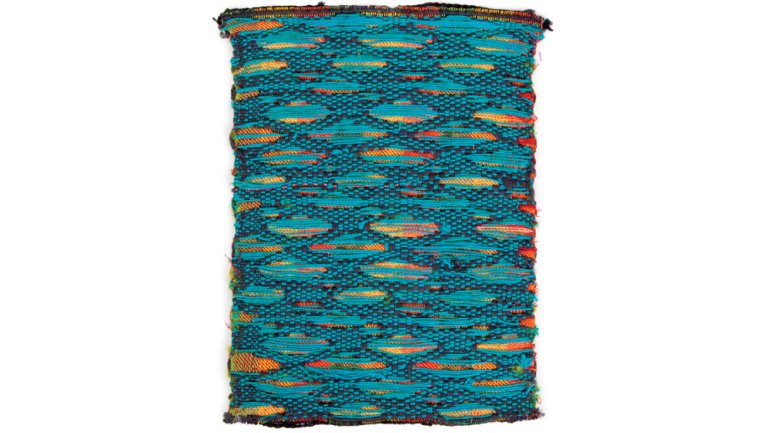Natural Translation
Natural Translation
If you happened to catch the Textile Society of America’s group show “New Directions” at the Craft and Folk Art Museum last fall, you were probably stopped in your tracks at the entrance by a stunning weaving by Brooklyn artist Whitney Artell. Called Borderlands, it’s a large hanging that captures a moment of quiet outdoors, with light filtering through trees onto a leaf-strewn ground. That the scene is overlaid with silvery threads woven in the pattern of a chain-link fence – the very symbol of urban ugliness – doesn’t diminish its loveliness at all. In fact, the combination seems natural, even sublime.
“I’m interested in our concept of what nature is,” says Artell, 32. “Is nature this outside force, separate from us as humans? Are we not part of nature? It’s weird to me, the whole nature-culture dichotomy that we have as Westerners.”
In her art, Artell finds beauty in a postindustrial aesthetic, one that blends the romantic ideal of an unspoiled landscape with the everyday detritus of human activity and production. That fusion of raw and organic with built and structured is also embodied in her process, which usually starts with hand manipulation of found materials and finishes with the use of modern technological tools. She’s even integrated her environmental interests and her personal practice as a maker with her day job as a designer for True Textiles, a domestic mill committed to eco-friendly manufacturing.
“I’m fascinated by industry,” Artell says. “I don’t think we can really go back and get away from it. So it’s important to find ways to work within that system.” At True Textiles, her specialty is health care. “It’s a lot of hospital curtains, which is actually related to what I’m interested in conceptually. I really enjoy creating imagery from nature that’s soothing to the patient.”
Her passions are the logical result, she says, of growing up in suburban New Jersey, with trains running past her yard and a creative mother who taught her quilting and gardening. After earning her BFA in fiber at Maryland Institute College of Art in 2006, she did stints designing for Izod and Nautica, then went back to school, earning an MFA in textiles from the Rhode Island School of Design in 2012.
Borderlands was inspired by photos she took in Providence riding her bike along a wooded bay path, with a view of abandoned industrial buildings. She collaged those images with a mix of dirt, plastic bits, and gesso. “There has to be this other step of translating [images] into materials, to really push the concept.” She then scanned the composition into a digital file, translated it to a weave structure, and produced the piece on a computerized Jacquard loom. “Jacquard weaving is my main, favorite way of working, how I finally bring together all these disparate elements. It gives you a structure and limitations.”
She’ll use whatever technique suits her purpose, though. For a piece called Third Nature, she photographed moss growing on telephone poles, stapled the pictures to wood, scanned the image, digitally printed it on fabric, then ended up shredding and free-form embroidering the whole thing to suggest tattered flyers tacked to a post. Toxic Sublime, another digitally printed work, showcases the unexpectedly artful pattern of a piece of found pressboard. “I thought, ‘This is beautiful, I have to make something about this.’ Then I read about how it’s actually made, how toxic it is. Well, that fit, too.”
Artell’s latest works in progress are based on a 2014 residency at Wave Hill, a 28-acre public garden in the Bronx. With access to a greenhouse and a studio overlooking the Hudson River, it was a tailor-made experience of nature in a big-city context. Meanwhile, her job with the mill has her always thinking about the artistic possibilities of the Jacquard loom. “I love what I do,” she says. “I’m constantly learning more about weaving.”

